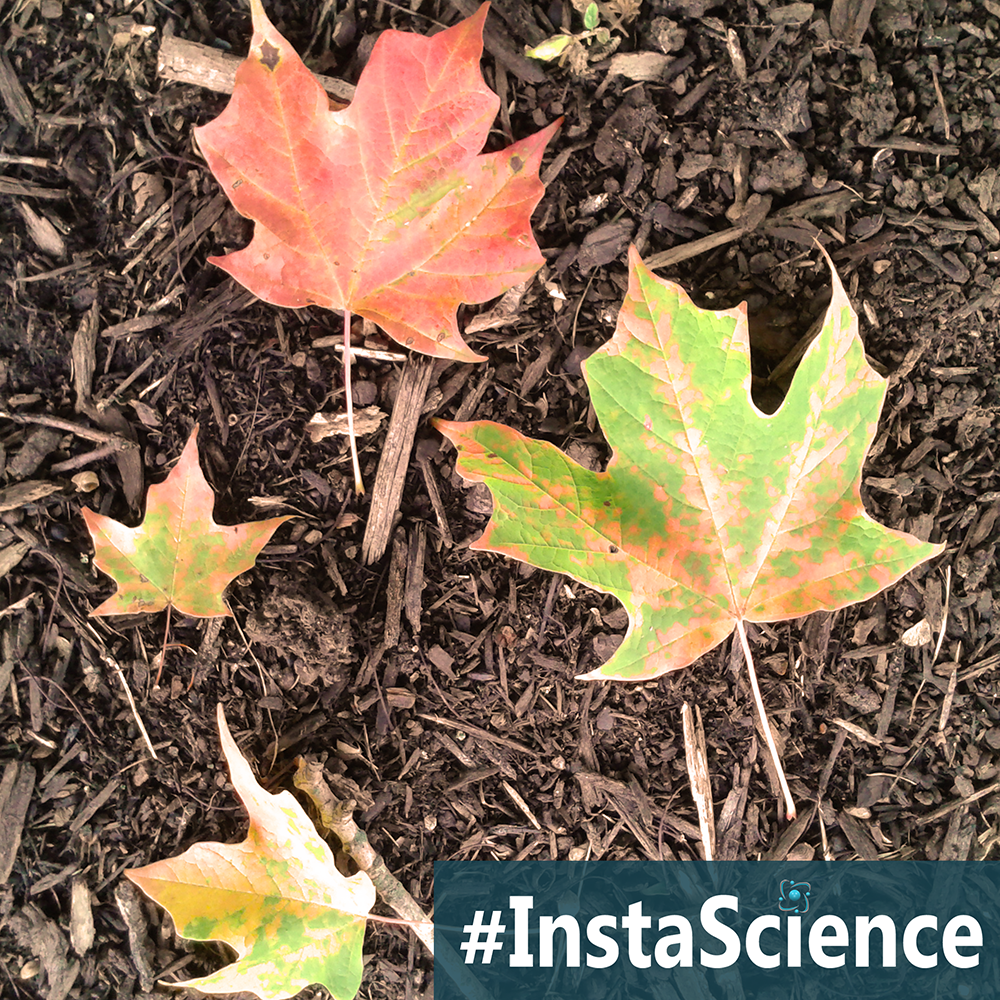
Crunch. Crunch. Crunch.
That’s pretty much what we hear as we walk through the woods around this time of year – our feet crunching up the dead leaves that have fallen from the trees.
Each fall deciduous trees shed their leaves in preparation for winter. The tree seals off the leaf with a bit of cork that forms at the base of the leaf. This prevents water and nutrients from flowing into the leaf, so that it doesn’t freeze during the winter and damage the tree.
The leaf begins to die and the chlorophyll in the leaf fades. This makes the other pigments that are found in the leaves, the reds, oranges and yellows, easier to see. Eventually, the leaves will turn brown as they fall to the ground where they will be crunched up and the nutrients will be recycled.
Fun Fact – The drier and sunnier the days are in the fall, the redder the color we will see in the falling leaves!
Teaching Science At Home
Want to learn more about fall leaves? Check out the following articles:
- Why do leaves change color in autumn? from Science made Simple
- Why do leaves change color in autumn? from Wonderopolis
- Why do Leaves Change Color? {Video} from ACS Reactions
Related Homeschool Science Activities
Keep the learning going with these science activities!
- Fall Leaf Sorting – Head outside to collect as many different types of fall leaves you can find in your area. Once you get home, have your students sort the leaves into different categories (i.e., by color, by size, or by type).
- Fall Leaves Book – Have your students preserve their fall leaves in a booklet! (Link has directions and a free download.)
 Sign up below to receive weekly tips & tools for homeschool science and we'll send you a FREE copy of
Sign up below to receive weekly tips & tools for homeschool science and we'll send you a FREE copy of